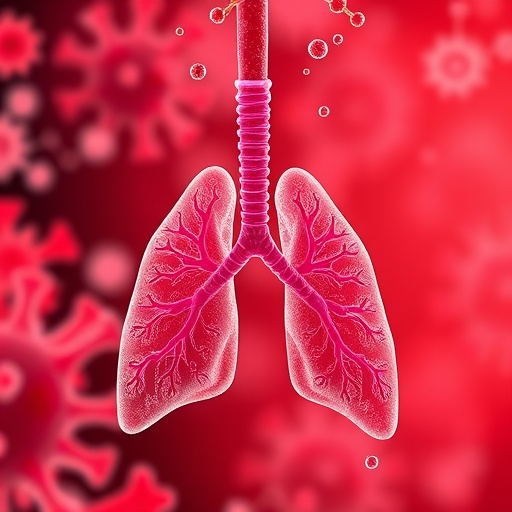Chronic hepatitis C linked to increased risk of pancreatic cancer, new study shows – European AIDS Treatment Group

Report on the Link Between Hepatitis C and Pancreatic Cancer: Implications for Sustainable Development Goal 3
Executive Summary
A study by Yale School of Medicine has identified chronic Hepatitis C virus (HCV) infection as a significant risk factor for pancreatic cancer. This finding directly impacts global health initiatives, particularly Sustainable Development Goal 3 (Good Health and Well-being), by highlighting a modifiable risk factor for a lethal non-communicable disease. The research underscores the critical importance of HCV screening and treatment as a preventative health measure to combat both communicable and non-communicable diseases, aligning with specific targets set forth by the United Nations.
Key Research Findings
- Individuals with chronic HCV have a 1.8-fold increased risk of developing pancreatic cancer compared to uninfected individuals.
- This risk is substantially higher than other well-established risk factors such as diabetes (1.2-fold increase) or active smoking (1.3-fold increase).
- The study identifies chronic HCV as a strong, and importantly, a potentially modifiable risk factor.
- Genetic variations of the virus, specifically genotypes 1 and 3, were associated with a slightly higher risk compared to genotype 2.
Methodological Overview
The conclusions are based on a retrospective cohort study analyzing longitudinal data from the Veterans Health Administration (VA).
- Data Source: The study utilized the extensive VA database, which includes objective health records.
- Sample Size: Approximately 6.3 million individuals who had undergone HCV testing were included.
- Limitations: The study acknowledges that its population is predominantly male and may not fully account for variables such as socioeconomic status or disparities in healthcare access outside the VA system.
Alignment with Sustainable Development Goals (SDGs)
The study’s implications are deeply intertwined with the objectives of SDG 3, which aims to ensure healthy lives and promote well-being for all at all ages.
- Target 3.3: Combat Hepatitis: By establishing a clear link between HCV and a fatal cancer, the research reinforces the urgency of global efforts to combat hepatitis. Expanding screening and providing access to curative treatments (with a ~95% success rate) are direct actions toward achieving this target.
- Target 3.4: Reduce Mortality from Non-communicable Diseases (NCDs): Pancreatic cancer is a leading cause of cancer-related death. Identifying and treating HCV represents a direct strategy for the prevention of this NCD, contributing to the goal of reducing premature mortality.
- Target 3.d: Strengthen Health Risk Management: This research enhances the capacity for early warning and risk reduction. By understanding that HCV is a precursor risk, healthcare systems can better manage patient health and implement targeted surveillance strategies.
Recommendations and Future Directions
To leverage these findings for improved public health outcomes and advance progress on the SDGs, the following steps are recommended:
- Promote broader, universal HCV screening across the general population to identify and treat chronic infections before they lead to severe complications like liver disease or pancreatic cancer.
- Conduct further research to confirm whether the successful treatment of HCV effectively mitigates the associated risk of pancreatic cancer.
- Develop and implement predictive models using electronic health records (EHR) to identify individuals at high risk, facilitating earlier detection and intervention.
- Pursue further studies in more diverse populations to validate these findings and ensure equitable application of preventative strategies, addressing SDG 10 (Reduced Inequalities).
1. Which SDGs are addressed or connected to the issues highlighted in the article?
-
SDG 3: Good Health and Well-being
This is the primary SDG addressed in the article. The text focuses on a significant health issue: the link between a communicable disease (Hepatitis C) and a non-communicable disease (pancreatic cancer). The research aims to understand disease risk factors, encourage screening, and enhance early detection to “help improve patient outcomes,” which directly aligns with the goal of ensuring healthy lives and promoting well-being for all at all ages.
-
SDG 9: Industry, Innovation, and Infrastructure
The article highlights the role of scientific research and advanced data analysis in addressing health challenges. The study itself, conducted by the Yale School of Medicine using “extensive databases like the one at the VA,” represents an investment in scientific research. The future goal to “build predictive models in large EHR databases such as the VA and EPIC Cosmos” to enhance early detection is a clear example of using innovation and technological infrastructure to advance public health, which connects to the research and development aspect of SDG 9.
2. What specific targets under those SDGs can be identified based on the article’s content?
-
Target 3.3: End the epidemics of… hepatitis… and other communicable diseases
The article is centered on chronic Hepatitis C virus (HCV), a communicable disease explicitly mentioned in this target. The discussion about the importance of “broader HCV screenings across the general population” and the high cure rate (~95%) of modern treatments directly supports the global effort to combat and ultimately end the hepatitis epidemic.
-
Target 3.4: Reduce by one-third premature mortality from non-communicable diseases through prevention and treatment
Pancreatic cancer is a non-communicable disease and the “third leading cause of cancer deaths in the United States.” The study identifies HCV as a “strong, potentially modifiable risk factor.” By encouraging HCV screening and treatment, the research provides a pathway for prevention. Furthermore, the future goal of enhancing “early detection” is a critical strategy for reducing mortality from this cancer, directly aligning with this target.
-
Target 9.5: Enhance scientific research, upgrade the technological capabilities of industrial sectors in all countries… encouraging innovation
The article is a direct result of scientific research. The study’s methodology, which involved analyzing “approximately 6.3 million individuals” from the Veterans Health Administration database, and the future plan to “build predictive models in large EHR databases,” exemplify the enhancement of scientific research and the use of technological innovation to solve complex health problems.
3. Are there any indicators mentioned or implied in the article that can be used to measure progress towards the identified targets?
-
Prevalence of chronic Hepatitis C
The study’s core finding is that “individuals with chronic hepatitis C virus (HCV) infection have a 1.8-fold increased risk of pancreatic cancer.” Measuring the prevalence of chronic HCV is essential to understanding the scale of the problem and the population at risk.
-
Hepatitis C screening rates
The article explicitly mentions screening as a key intervention, noting that “more than 75% of veterans receiving care at the VA have undergone this screening” and expressing hope that the research “encourages broader HCV screenings across the general population.” This rate is a direct measure of preventative action.
-
Hepatitis C treatment and cure rates
The article states that modern HCV treatment has an “approximately 95% cure rate.” This indicator is crucial for measuring the effectiveness of interventions to combat the disease, as successful treatment can mitigate the associated cancer risk.
-
Incidence and mortality rates of pancreatic cancer
The article identifies pancreatic cancer as the “third leading cause of cancer deaths.” Tracking its incidence and mortality rates would be the ultimate measure of progress in reducing premature mortality from this non-communicable disease, which is the goal of the research discussed.
-
Rates of early detection for pancreatic cancer
A central theme of the article is the need for early diagnosis, as “Most people with pancreatic cancer are not diagnosed until the disease has progressed to advanced stages.” The development of predictive models aims to “enhance early detection,” making this a key performance indicator for improving patient outcomes.
4. Table of SDGs, Targets, and Indicators
| SDGs | Targets | Indicators |
|---|---|---|
| SDG 3: Good Health and Well-being | Target 3.3: End the epidemics of… hepatitis… and other communicable diseases |
|
| Target 3.4: Reduce by one-third premature mortality from non-communicable diseases through prevention and treatment |
|
|
| SDG 9: Industry, Innovation, and Infrastructure | Target 9.5: Enhance scientific research… encouraging innovation |
|
Source: eatg.org
What is Your Reaction?
 Like
0
Like
0
 Dislike
0
Dislike
0
 Love
0
Love
0
 Funny
0
Funny
0
 Angry
0
Angry
0
 Sad
0
Sad
0
 Wow
0
Wow
0




















































.jpg.webp?itok=0ZsAnae9#)



























